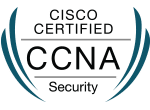Network Admin - IT Support
Monitor - Manage - Troubleshoot


Network Administration - IT Support
Network administration and IT support together form the backbone of modern technological infrastructures. In today’s digitally driven world, network administration has evolved to encompass not only the management of robust, secure, and reliable networks but also seamless collaboration with IT support. Network administrators play a pivotal role in ensuring the uninterrupted operation and communication within businesses, serving as silent guardians of our digital landscapes.
As businesses increasingly rely on internet connectivity, cloud-based services, and diverse IT systems, the synergy between network administration and IT support becomes even more crucial. While network admins focus on the infrastructure’s architecture and connectivity, IT support professionals provide direct assistance to end-users, resolving issues, and ensuring smooth day-to-day operations. Together, they contribute to the overall productivity, collaboration, and innovation within organizations, making their roles both critical and highly sought after in the ever-evolving landscape of IT.
Start Your Journey Today
"*" indicates required fields
Network administration is a broad field with a range of job titles that often correspond to different levels of responsibility, expertise, and focus areas. Below are some job titles related to network administration that you might encounter:
Responsible for maintaining computer networks and solving any problems that may occur with them.
- Configuring network hardware
- Administering network services
- Network troubleshooting
- Maintain and troubleshoot storage networks
- Budgeting for equipment and assembly costs
Similar to a Network Administrator but often with a broader scope that includes overseeing the entire IT infrastructure.
- User Administration
- Monitoring systems
- Upgrading systems
- Monitoring system performance and troubleshooting issues
- Perform daily security backups and restores
Leads a team of network professionals, overseeing the operation of networks and related IT infrastructure.
- Monitor system use
- Maintaining computer networks and backups
- Performing diagnostic analysis of the network
- Identify problems and then fix them
- Network monitoring and alerting
- Firewalls
- Network security
- Configuring and managing network devices
- Monitor network performance and integrity
- Troubleshooting network problems
Offers support to users, solving issues and maintaining IT services.
- Installing equipment
- Provides technical support to it users
- Identify hardware and software problems
- Performing troubleshooting to isolate problems
- Conduct technology training for new user
Focuses on the integration and maintenance to install and repair voice, data, wireless, and video communications systems to ensure reliable operation.
- Install telecommunications lines or equipment
- Test lines or devices to ensure that they work properly
- Explain the use and maintenance of equipment to customers
- Keep records of maintenance, repairs, and installations
- Operate, maintain, or repair damaged or malfunctioning telecommunications lines or equipment
Information Technology Support Tiers
Network Administration “tiers” can refer to different things depending on the specific context. However, it often relates to levels of support, network design, or the hierarchy of the network infrastructure. In IT support, tiers typically refer to the levels of support provided to end-users or within an organization.
Helpdesk
Technical Support
Network Engineer
Vendor Support
Our Programs and Network Admin Specific Certifications
ITSA
Your network admin journey begins with the CompTIA Security+ certification in our Information Technology Security and Administration Program (ITSA)
 Microsoft Certified AZ-900: Azure Server Fundamentals. Demonstrate foundational knowledge of cloud concepts in general and Microsoft Azure in partifular.
Microsoft Certified AZ-900: Azure Server Fundamentals. Demonstrate foundational knowledge of cloud concepts in general and Microsoft Azure in partifular.
 Master hardware and software fundamentals, operating systems, networking and security essentials.
Master hardware and software fundamentals, operating systems, networking and security essentials.
 Gain specialized knowledge and skills in network administration.
Gain specialized knowledge and skills in network administration.
 Knowledge of open-source technology and servers.
Knowledge of open-source technology and servers.
CWP
Your network admin journey begins with the CompTIA Security+ and CompTIA CySA+ certifications in our Cyber Warrior Program (CWP).
 Master hardware and software fundamentals, operating systems, networking and security essentials.
Master hardware and software fundamentals, operating systems, networking and security essentials.
 Gain specialized knowledge and skills in network administration.
Gain specialized knowledge and skills in network administration.
 Apply behavioral analytics to networks and devices for combating malware and advanced, persistent cybersecurity threats.
Apply behavioral analytics to networks and devices for combating malware and advanced, persistent cybersecurity threats.
CSS
The next step in your network admin journey is in our Cyber Security Specialist Program (CSS). You’re a working IT professional (or ITSA graduate) ready to further specialize and advance in the field of Cybersecurity. This program teaches you how to plan, configure and operate simple WAN and switched LAN networks with a primary eye on data security. You’ll learn how to think like a hacker, identify potential vulnerabilities, and protect a major enterprise from cyberattacks.
 Gain specialized knowledge and skills in network administration.
Gain specialized knowledge and skills in network administration.
 Covers how to install, operate, and troubleshoot networks, understand wireless networking, and reduce security threats.
Covers how to install, operate, and troubleshoot networks, understand wireless networking, and reduce security threats.
 Apply behavioral analytics to networks and devices for combating malware and advanced, persistent cybersecurity threats.
Apply behavioral analytics to networks and devices for combating malware and advanced, persistent cybersecurity threats.(May be transferred from CWP)
CSE
The final step in your network admin journey is in our Cyber Security Engineer Program (CSE). You’re an experienced Cyber or Information Security Specialist or a graduate of the MyComputerCareer CSS Program. Learn to engineer IT security infrastructure and take your career to the next level. You dive deep into security routing protocol concepts like VLSM, IPv6, OSPF and EIGRP, and learn to regulate data coming in and out of your network using access controls at an enterprise level.
 Covers how to install, operate, and troubleshoot networks, understand wireless networking, and reduce security threats.
Covers how to install, operate, and troubleshoot networks, understand wireless networking, and reduce security threats.(May be transferred from CSS)
 Apply behavioral analytics to networks and devices for combating malware and advanced, persistent cybersecurity threats.
Apply behavioral analytics to networks and devices for combating malware and advanced, persistent cybersecurity threats.(May be transferred from CWP or CSS)
 Covers technical skills in various environments, assessing an enterprise’s cybersecurity readiness, and implementing enterprise-wide cybersecurity solutions.
Covers technical skills in various environments, assessing an enterprise’s cybersecurity readiness, and implementing enterprise-wide cybersecurity solutions.

